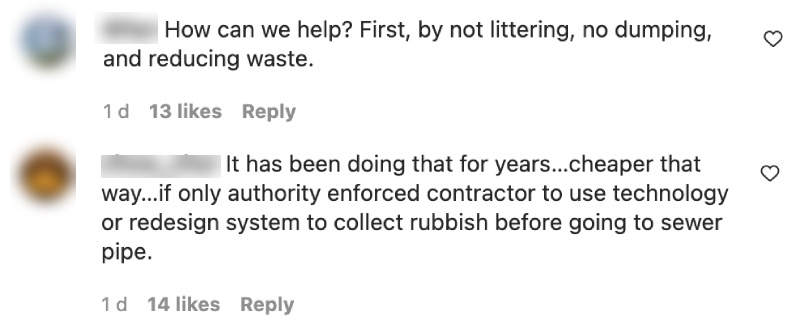'They don't deserve this': Netizens appalled by photos showing migrant worker working in sewer pipe


 PUBLISHED ONAugust 12, 2022 10:03 AMByClaudia Tan
PUBLISHED ONAugust 12, 2022 10:03 AMByClaudia TanSingapore may be universally known as one of the cleanest cities in the world but we often pay little heed to the ones who have helped us earn this reputation.
An Instagram post by migrant worker rights group Humanitarian Organization for Migration Economics (Home) on Wednesday (Aug 10) has shed light on some of the not-so-pleasant work conditions they have to work under.
The post showed several snapshots of what looks like a sewer pipe and more poignantly, the post also included a picture of a migrant worker squeezing himself into the pipe, and another image where he was covered in dirt.
[embed]https://www.instagram.com/p/ChEQNmtPg8E/?hl=en[/embed]
In the Home post, it was written that these pictures were shared by a migrant worker who had to work in a sewer pipe that was "choked by rubbish".
"He and his colleagues had to crawl into the pipe to manually clear the blockage without adequate training or mechanical equipment," the post wrote.
"Workers must not be assigned work that they are ill-equipped for, especially in hazardous environments like confined spaces. Such practices will risk workplace injuries, occupational diseases and fatalities. All workers deserve a safe and healthy working environment."
When AsiaOne reached out to Home, the organisation declined to provide more details about the incident including the location, and said that they would like to protect the identity of the workers involved.
Home is a Singapore-based charity founded in 2004 by the late Bridget Tan, and is dedicated to empowering and supporting migrant workers who experience abuse and exploitation.
Home's post received several comments from netizens who were appalled at the conditions the workers had to endure.
"They don't deserve this," said one netizen.

There were other netizens who suggested that the public could perhaps reduce the occurrence of such instances by "not littering, no[t] dumping and reducing waste".
However, one netizen pointed out that perhaps getting migrant workers to manually clear sewer pipes was "cheaper", remarking that the authorities should "use technology" or "redesign [the] system" if this was to be prevented.

AsiaOne has also reached out to the Public Utilities Board (PUB) for comment.
According to the Tripartite Alliance for Workplace Safety and Health, some of the hazards associated with confined spaces include suffocation (due to oxygen deficiency), fire and explosion (by flammable gases and vapours) and poisoning (by toxic gases, vapours or fumes).
And before deploying workers into confined spaces, employers are required to evaluate the need to enter the confined space, ensure safe means of access to and egress from the confined space and to ensure there is sufficient lighting for entry into and work in the confined space.
ALSO READ: I lived, ate and worked with migrant workers for 24 hours - here's how it was like
claudiatan@asiaone.com